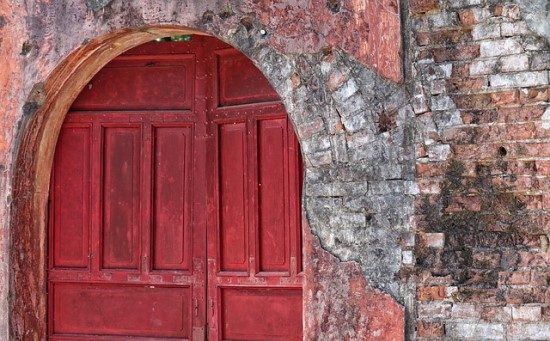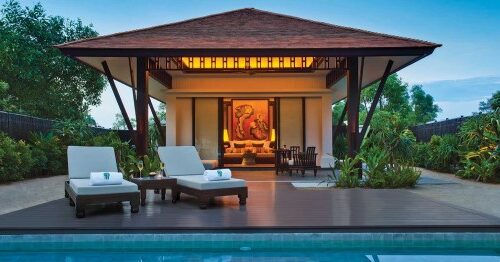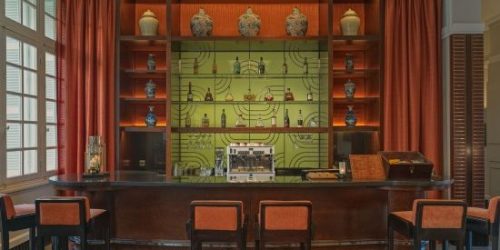Menu
Threaded along the beautiful Perfume River and packed with vestiges of its dynastic past, Hue is one of Vietnam’s most engaging cities. Hue was the capital of the Vietnamese empire under the Nguyen Dynasty from 1802 to 1945. Monuments, palaces and other reminders of this regal past pepper the city, which divides itself in three major areas: the 19th century walled citadel, containing the majestic Imperial City; the European city, a triangle of land where most tourism services and hotels are located; and the pine covered city surroundings, where the Nguyen royals built their palatial mausoleums. But buildings and museums are not all this city has to offer. Dubbed by the locals “the food capital of Vietnam”, Hue offers a unique opportunity for culinary exploration. Home to many speciality foods such as banh beo, banh khoai and bun bo, it is well worth staying a couple extra nights to sample this particular cusine. All in all, it is evident that Hue is one of Vietnam’s pre-eminent tourist destinations.

Hue’s days of glory kicked off in the early 19th century when emperor Gia Long laid a out a vast citadel. Within the citadel’s outer walls lies the Imperial City, containing administrative offices, parks and dynastic temples, with the royal palaces of the Forbidden Purple City at its center. The entire complex was the seat of power until the imposition of the French protectorate in the 1880s. Thereafter it existed mostly to carry on symbolic traditions until the Nguyễn dynasty was ousted in 1945, with the Proclamation of Independence of the Democratic Republic of Vietnam.
Most of the Imperial City has been now restored to its former glory and it constitutes Hue’s main tourist attraction. It was inscribed in the list of World Heritage Sites by UNESCO in 1993 together with the Imperial Mausoleums located just off the city limits.
Southeast of the Citadel, on both banks of the Perfume River, sit the imperial tombs of Hue, monuments to the rulers of the Nguyen dynasty, most prominently Minh Mang, Khai Dinh, and Tu Duc. Most were planned by the emperors themselves, so each of them reflects the personality of the deceased ruler. The ornate complexes house not only the imperial tombs and temples but lush manicured gardens and courtyards full of stone elephants, horses and soldiers.
Built in 1601 between the Perfume River and a pine forest, 3km from the Citadel, the Thien Mu Pagoda (Pagoda of the Celestial Lady) is one of the oldest religious buildings in the country. One of the curiosities of the Thien Mu Pagoda is that it houses the car that took the monk Thich Quang Duc when he immolated himself in protest in 1963 in one Saigon’s busy streets.
Lang Co Beach is located between two of Vietnam’s most visited cities and UNESCO sites: Hue and Hoi An. The crescent-shaped beach is a good option for those looking to enjoy a few days by the sea without hoards of tourists. The area is home to two of Banyan Tree’s lavish properties, evidence of Lang Co’s beauty and exclusivity.
Just an hour from Hue, Bach Ma National Park is a top choice for lovers of eco-tourism and those looking to step out of the beaten path. The park is situated in the Annamite Mountains and is one of the wettest places in Vietnam. Its steep slopes and grasslands are home to many endemic species of birds and mammals.

Located at the Azerai La Residence, Le Gouverneur offers premium spirits, Cuban cigars and cocktails in an elegant 1920s backdrop. The riverside La Residence occupies the former mansion of the French Resident Superior of Annam, the main headquarters of the French colonial regime in Central Vietnam. The bar features a spectacular, original mural modelled from frescoes in the Musée des Colonies in Paris. Open from 9am to midnight, Le Gouverneur is the ideal spot to enjoy cocktail hour and breathtaking sunset views of the Hue Imperial City and the Perfume River.

See the most impressive and intriguing landmarks of Hue from the back of a classic Vespa. Explore he city with both style and excitement. Interact with your knowledgeable guide and Vespa driver, who will show you the secrets of Vietnam’s classical capital.
Visit Thien Mu pagoda enjoy a lunch at a traditional restaurant.you around the impressive Imperial Citadel, and one of the following imperial tombs: Tu Duc Royal Tomb, or the Khai Dinh Tomb.